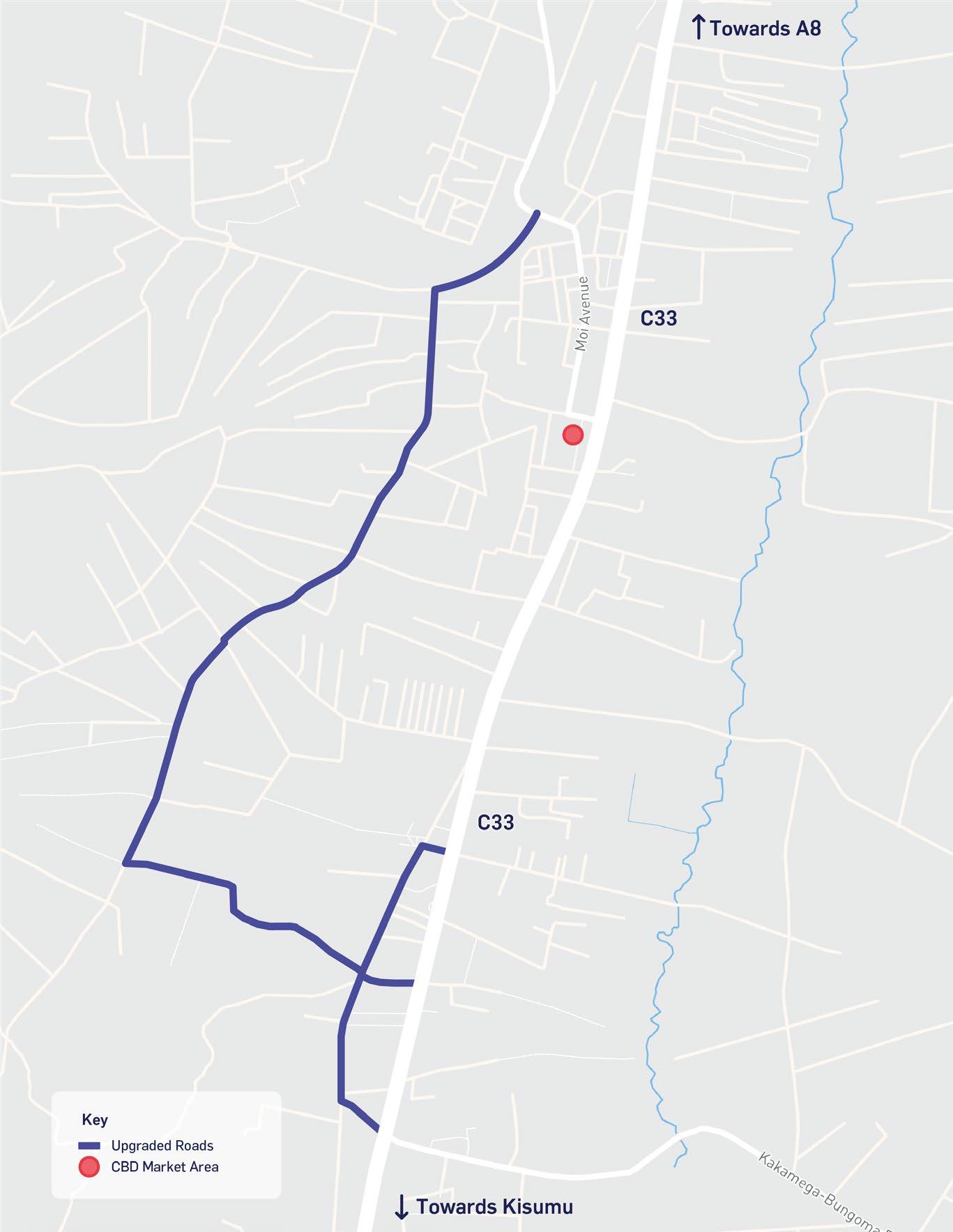3 minute read
Table 4-3 - Agriculture, livestock, and agri-processing soft initiatives
Table 4-3 - Agriculture, livestock, and agri-processing soft initiatives
Aim Action
A4 - Organisation of the key players along Bungoma’s supply chains.
Create a business environment that is attractive to private sector investors and Address lack of downstream capacity. A5 - Training and educating farmers.
A6 - Distribution of equipment, and technology for farmers.
A7 - A new model for aggregation of agricultural produce.
A8 - Support the production of animal feed in Bungoma
A9 - Create a PPP friendly environment.
A10 - Improved access to finance for farmers. Description
These interventions are integral to the success of Bungoma’s agriculture, livestock, and agri-processing sector, and therefore have been detailed in depth below.
A4 - Organisation of the key actors along Bungoma’s supply chains
There are a number of factors that manifest the challenges of Bungoma’s agriculture and livestock sector, its lack of strong cooperatives in Bungoma County, and unsuccessful attempts at value addition. Organising the sector would address some of these challenges and have the following benefits:
There is a clear need for organisation of the different actors and businesses involved in Bungoma’s key supply chains. This will be integral to the success of the proposed VCs. There are different models and approaches to organise and facilitate cooperation across the players involved across supply chains. One model that may work well for Bungoma is a Makueni style structure of cooperatives where there are just a few individual farmer-based organizations (FBOs) (such as farmer associations, farmer interest groups and cooperatives) which focus on just one product, that sit under one umbrella organisation which would be managed by the County government. Figure 4-3 shows how this might apply to the key players involved in Bungoma relating to some of the shortlisted VC opportunities.
Structured coordination such as in Trans-Nzoia
Improve technical capacity
Incentivises participation
Structuring, specialisation, and focus of FBOs
FBOs need to be physical rather than virtual
Lack of political will from County Government
Cultural diversity In Trans-Nzoia County, there is a very well-structured Coop movement in every sub-county (or constituency) operating in the poultry, milk, and maize/cereals value chains. The success of the cooperatives in neighboring counties can provide a guide for development in Bungoma. The umbrella organisation should actively look to engage with these counties and its cooperatives
It is important that the cooperative officers from the county government have the appropriate education, commercial knowledge, and entrepreneurial background to sufficiently support the range of cooperative members.
There is a need to incentivise participation and change the narrative around financial support in Bungoma. A historical culture of handouts in Bungoma has created an issue of expectations from businesses in Bungoma and a lack of risk and incentive when receiving funds. Where residents have received handouts in the past, they have been reluctant to put their own money on the line. Their needs to be a step change in attitudes.
This is also reflected in Bungoma’s cooperatives, where they rely on funds solely from the county or other organisations, they do not have consequences for failed ventures.
Bungoma county’s cooperatives in particular suffer from an unclear agenda to guide the work they do. They lack specialisation and focus which often confuses their objectives. They also tend not to be structured with clear strong leadership in place.
Although registered to an address, many of the cooperatives do not have an office space or physical structures for operation. Officials often move around with coop movement documents in folders.
The County Government do not provide physical assets to cooperatives such as land that can support operations.
Trans-Nzoia County has a good model for county involvement in cooperatives. The officials from the county government are keen to be involved in the affairs of the coops and support their agendas. They encourage the people, organise and facilitate meetings, including annual general meetings.
Trans-Nzoia County, like Bungoma, is a cosmopolitan county with almost all the sub-tribes of Kenya. However, unlike Bungoma, Trans-Nzoia’s existing coops have members from different varied communities.
This cultural diversity has brought in different strengths to coops since bringing alternative views for different cultural and religious backgrounds.
In Bungoma, the coop memberships are almost entirely composed of indigenous people, and there is a lack of diversity in composition and thought.











